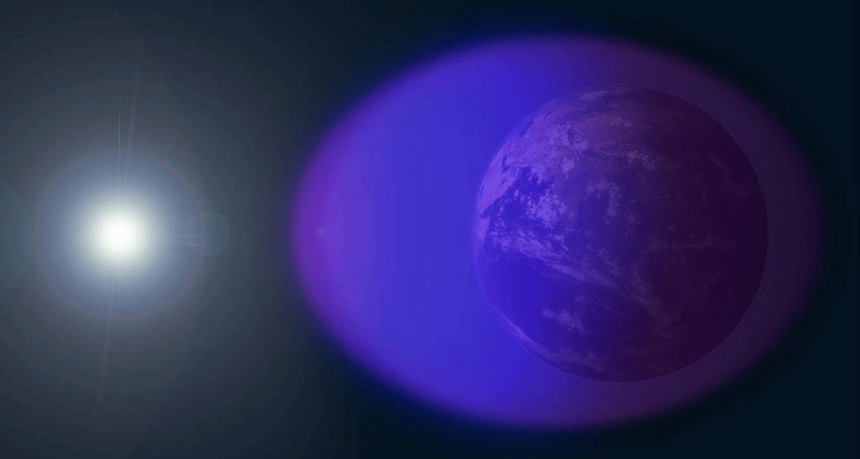atmosphere The envelope of gases surrounding Earth or another planet.
atom The basic unit of a chemical element. Atoms are made up of a dense nucleus that contains positively charged protons and uncharged neutrons. The nucleus is orbited by a cloud of negatively charged electrons.
eclipse This occurs when two celestial bodies line up in space so that one totally or partially obscures the other. In a solar eclipse, the sun, moon and Earth line up in that order. The moon casts its shadow on the Earth. From Earth, it looks like the moon is blocking out the sun. In a lunar eclipse, the three bodies line up in a different order — sun, Earth, moon — and the Earth casts its shadow on the moon, turning the moon a deep red.
electron A negatively charged particle, usually found orbiting the outer regions of an atom; also, the carrier of electricity within solids.
ionosphere A layer of Earth’s atmosphere lying around 75 and 1,000 kilometers (47 and 620 miles) above Earth’s surface. It absorbs the sun’s harmful extreme-ultraviolet rays. That energy strips electrons from atoms and molecules, creating a zone full of free-floating ions. The share of ions present, here, affects radio and other signals passing through it.
molecule An electrically neutral group of atoms that represents the smallest possible amount of a chemical compound. Molecules can be made of single types of atoms or of different types. For example, the oxygen in the air is made of two oxygen atoms (O2), but water is made of two hydrogen atoms and one oxygen atom (H2O).
organism Any living thing, from elephants and plants to bacteria and other types of single-celled life.
particle A minute amount of something.
radiation (in physics) One of the three major ways that energy is transferred. (The other two are conduction and convection.) In radiation, electromagnetic waves carry energy from one place to another. Unlike conduction and convection, which need material to help transfer the energy, radiation can transfer energy across empty space.
radio To send and receive radio waves, or the device that receives these transmissions.
radio waves Waves in a part of the electromagnetic spectrum. They are a type that people now use for long-distance communication. Longer than the waves of visible light, radio waves are used to transmit radio and television signals. They also are used in radar.
sun The star at the center of Earth’s solar system. It’s an average size star about 26,000 light-years from the center of the Milky Way galaxy. Also a term for any sunlike star.
ultraviolet A portion of the light spectrum that is close to violet but invisible to the human eye.
ultraviolet light A type of electromagnetic radiation with a wavelength from 10 nanometers to 380 nanometers. The wavelengths are shorter than that of visible light but longer than X-rays.
wave A disturbance or variation that travels through space and matter in a regular, oscillating fashion.








